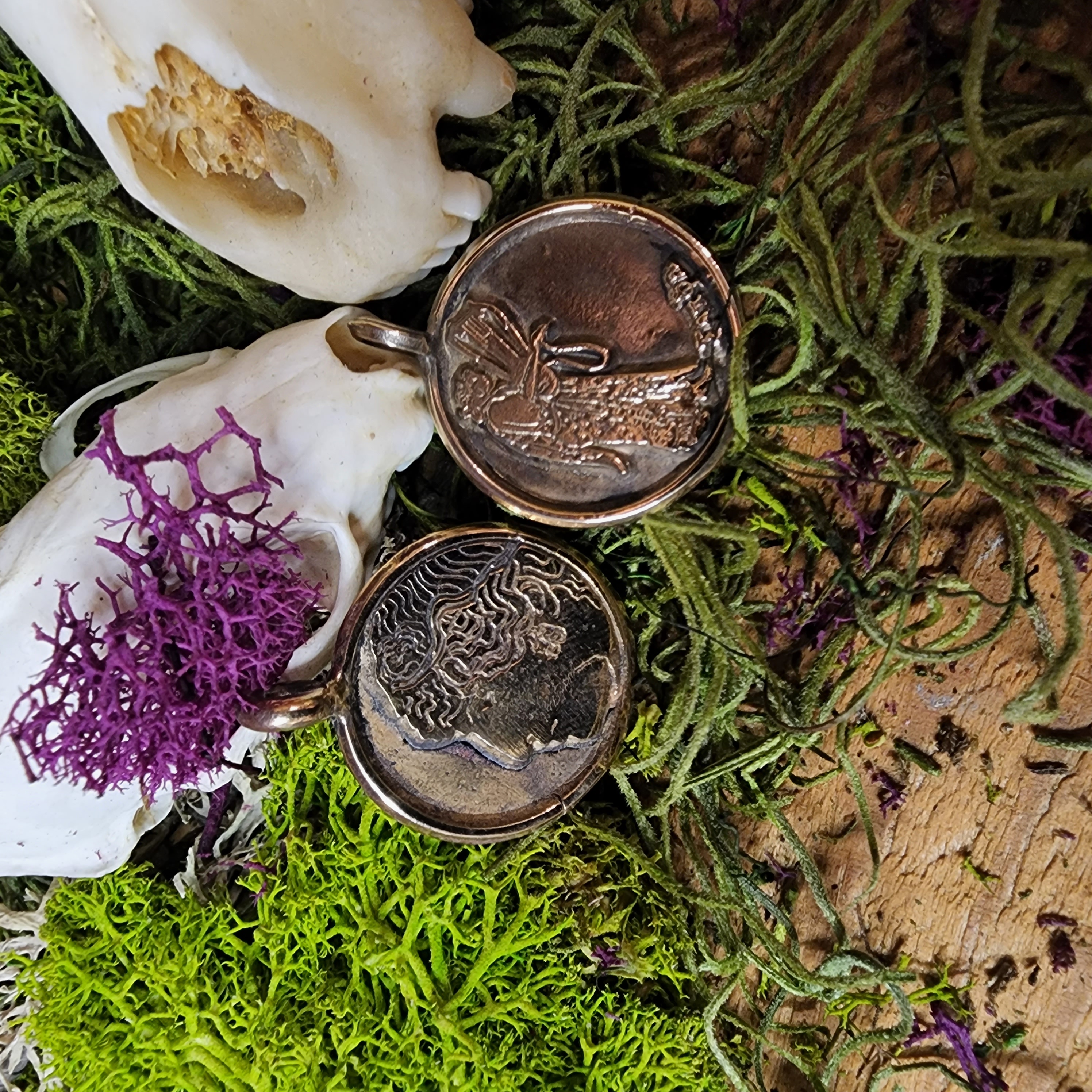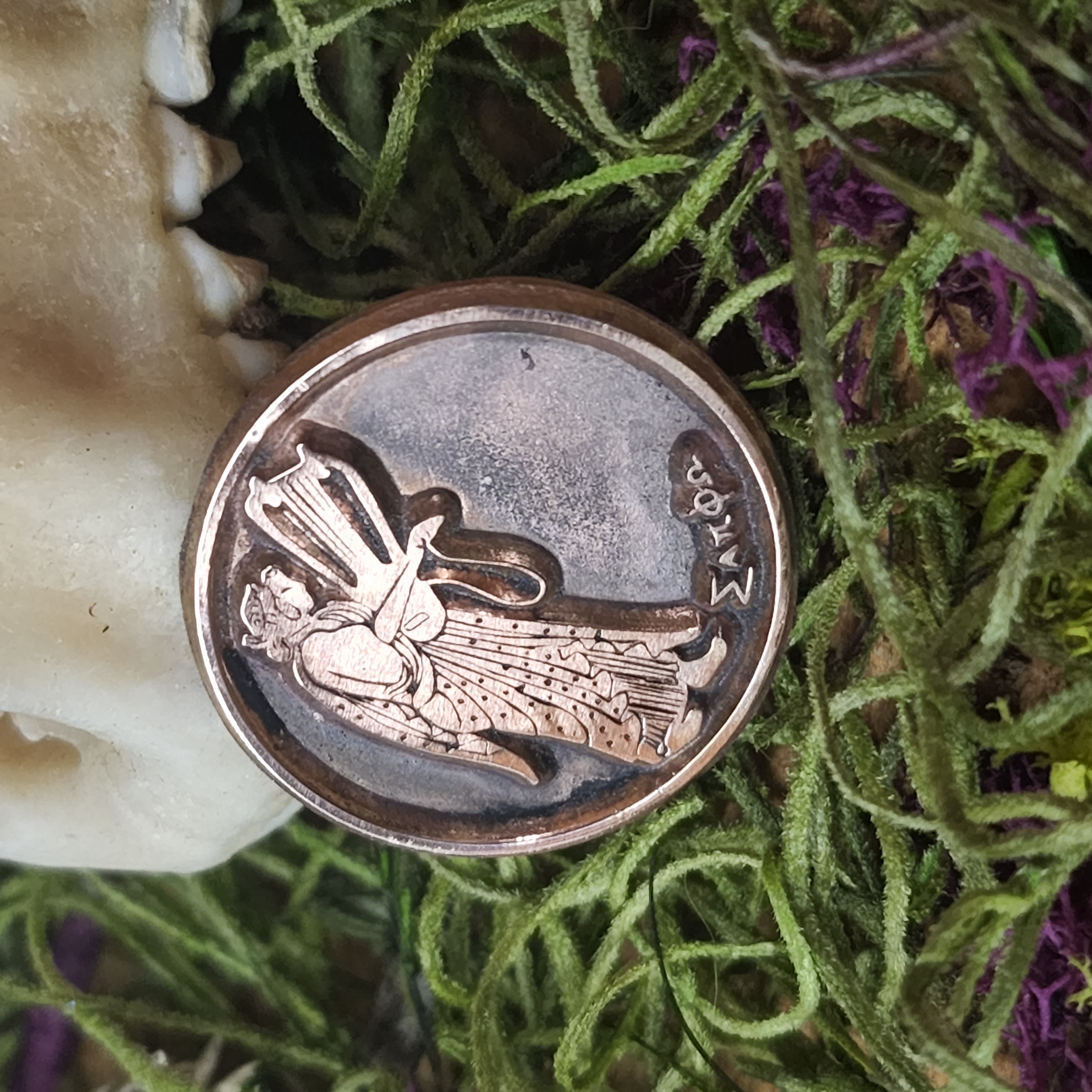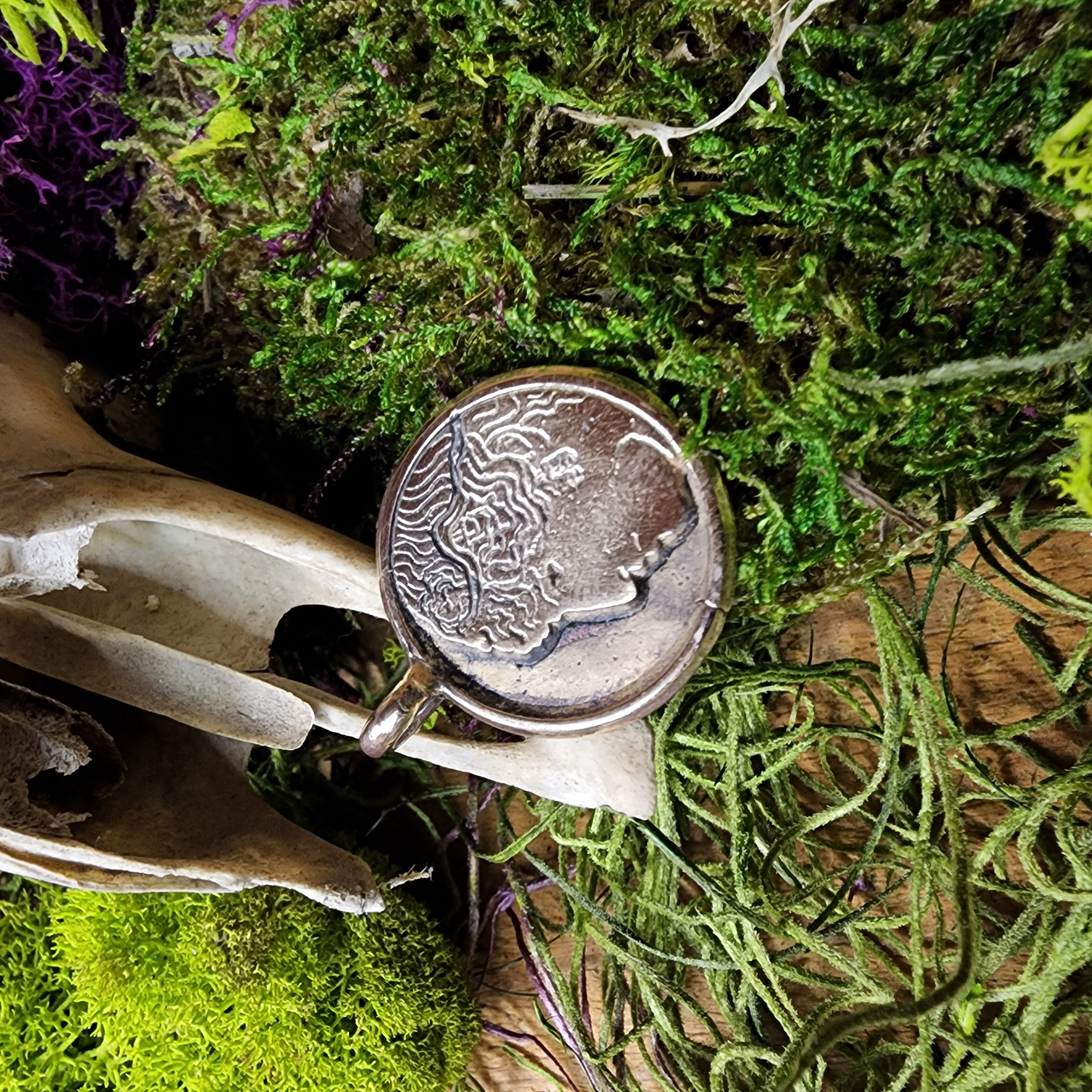
Happy Pride, friends. It’s been a bit of a road to get here. I meant to have this done weeks ago. Life, as they say, happened, instead.
Having a Sorcerer’s Workbench Pride Line was one of my big goals for 2022. But I set that goal for myself before I quit my day job, and while that decision did ostensibly leave me with more free time, the burnout and depression that led me to that decision … well, tending to those wounds has been a serious investment in time and energy.
In the end, I was only able to come up with two divine persons to launch what I hope will be an annual tradition: Sappho and Antinoos. Both are semi-mythic figures: real to the best of scholars’ knowledge, but the majority of their true biographies have been lost and replaced by myth.
The Antinoos design went perfectly from the jump. The Sappho design has given me trouble: the first prototype came out looking more like a Muppet than Classical beauty. The second prototype was perfect, but the first bronze exemplar didn’t turn out at all, and I somehow failed to get an exemplar into that day’s silver cast. But, as of tonight, I have a successful bronze cast and can properly unveil these images.

Sappho, on the off chance that you don’t know her, was a poet from the island of Lesbos in the Aegian Sea, who lived and wrote in the seventh and sixth centuries BCE. Her work was taught as a pinnacle of poetic skill for centuries, well into the Roman Empire, until – through a combination of censorship, neglect, and luck – it was lost to the ages. No contemporary biography survives, and mere scraps of her estimated 10,000 lines of poetry, but her work has been associated with sexual love between women since the Hellenistic period. Now, she and the island from which she came are virtually synonymous with queer women and their experiences.

Antinoos was a young man beloved of the Roman emperor Hadrian. More myth than fact remains of either his life or his death, but the record is clear that he died while travelling with Hadrian in Egypt and that emperor had him deified, established a hero cult in his name, and named a city after him. The cult never became a major religion, but it was widespread and reasonably popular, and Antinoos became both a religious and literary icon of sexual love between men.
I based the artwork for both of these medallions on classical artworks: Sappho on a black figure vase painting from the late 6th century BCE, and Antinoos on a Roman statue in the Antinous Mondragone style from the 2nd century CE, reframed in imitation of an ancient coin. Both will be in my usual 1 inch talisman style, though I am considering a 3/4 inch variation if there’s sufficient interest.
So, friends. Here it is. Sacred Sappho and Holy Antinoos, ancestral figures (for those of y’all who are into that thing), heroes in the hero-cult sense, shining beacons from the ancient past, lights that we can hold up to say “we have always been here, and we will always be here”. The Sorcerer’s Workbench Pride Line 2022. Better late than never.
